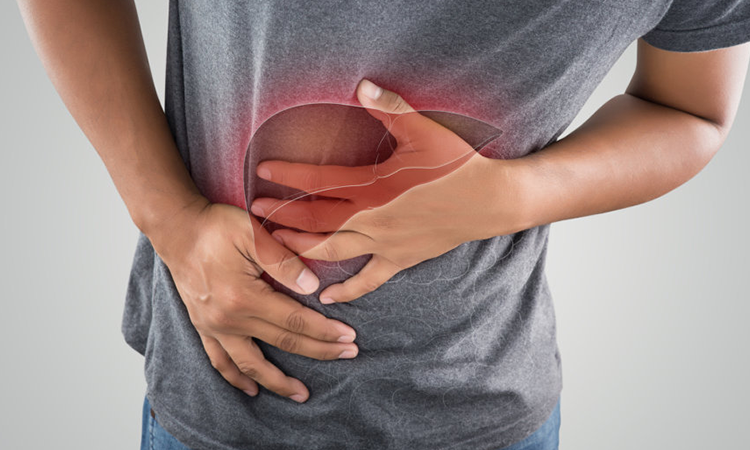
What is Alcoholic Liver Disease? – Alcoholic liver disease (ALD) is characterized by damage caused to the liver due to excessive alcohol use. Although most people are able to consume alcohol without suffering serious consequences, some heavy drinkers will develop liver disease and experience irreversible and potentially life-threatening effects.[su_divider top=”no”]
Who Suffers From ALD?
Studies have shown that ALD may begin after a threshold pattern of drinking has occurred, which is thought to be about four drinks a day for men and about two for women. Almost everyone who consumes alcohol at this level will exhibit some evidence of liver damage, but less than half of those will ever develop a serious liver condition.
Severe ALD is a condition traditionally experienced by older people into middle age and beyond. According to a recent report from NPR, however, from 1999-2016, the number of 25- to 34-year-olds who died annually from alcohol-related liver disease nearly tripled, reflecting an average annual increase of around 10 percent.[su_divider top=”no”]
Types of Alcoholic Liver Disease and Symptoms
The effects of alcoholic liver disease can vary from little to no symptoms, all the way to end-stage liver disease. In the interim, sufferers may experience a variety of symptoms, including but not limited to jaundice, hypertension, nausea and vomiting, fever, stomach pain, diarrhea and weight loss.
There are three types of liver disease related to alcohol use – fatty liver, alcoholic hepatitis, and cirrhosis.
- Fatty liver (a build-up of fat in the liver) can occur after an acute, but significant episode of alcohol consumption. It is usually without noticeable symptoms and is entirely reversible, however, and will not likely lead to chronic liver disease if the person later abstains or drinks in moderation.
- Alcoholic hepatitis is alcohol-induced liver damage that can occur after an excessive quality of alcohol has been consumed over an extended period. Symptoms may be non-existent or can result in liver failure/death. The condition may or may not be reversible.
- Liver cirrhosis is characterized by scarring that consists of thick bands of tissue. It is irreversible, but often takes years to reach a life-threatening status (end-stage) and in the interim, it can be treated and its progression slowed.
End-Stage Liver Disease Symptoms
End-stage liver disease can only be treated with a liver transplant. Symptoms may include the following:
- Easy bleeding or bruising.
- Jaundice – persistent or recurring yellowing of skin and eyes
- Intense itching
- Loss of appetite
- Nausea
- Swelling due to fluid buildup in the abdomen and legs.
- Concentration and memory problems
- Bleeding of the digestive (gastrointestinal) tract
- Brain and nervous system damage due to the buildup of toxins in the bloodstream (hepatic encephalopathy)
Alcoholism is Also a Disease
Alcohol addiction is a disease, not unlike other medical conditions such as cancer and diabetes. Being an alcoholic is not a choice – no more than having Type II diabetes is a choice. Both conditions, however, do require health decision-making and lifestyle changes in order to manage and minimize symptoms and complications.
Alcoholism is not curable, but it can be treated. It is best approached comprehensively, and customized by professionals at our addiction treatment center.
Services include psychotherapy, individual and group therapy, individual and family counseling, 12-step programs, holistic practices such as art therapy and yoga, and aftercare support.[su_divider top=”no”]
Addiction Treatment for Alcoholism and Alcoholic Liver Disease
Liver disease is treatable but may be irreversible, and those who suffer from severe cases face the possibility of death. Even those who successfully receive a liver transplant tend to have dramatically shortened lives, only living on average about five more years.
Moreover, ALD is a potentially life-threatening condition that can only be effectively treated through abstinence from alcohol. This can be achieved by undergoing intensive addiction treatment in a qualified substance abuse treatment center.
Treatment programs begin with a full assessment and detox. Medical detox is a process in which the patient is supervised in our center 24/7 and medications are administered to reduce the risk of complications and minimize symptoms of withdrawal.[su_divider top=”no”]
During detox, the body slowly rids itself of harmful toxins such as the by-products of excessive alcohol consumption.
Following detox, clients should participate in a long-term residential (inpatient) or outpatient treatment program. Residential clients stay in our center 24 hours a day, for ideally, no less than 30 days. Intensive outpatient clients visit the center several times per week but live at a private residence or sober living community.
After discharge from treatment, clients can still participate in our aftercare program and engage in alumni activities. Clients are also strongly encouraged to continue treatment with psychiatric professionals and counselors and attend 12-step meetings or other peer support groups.
Find Out More Information
Recovery is about you. Our aim is to provide you with effective clinical and peer support, an understanding of your addiction and the tools to succeed on your journey to a new life of recovery.
Find sobriety through inner harmony.
If you or your loved one is suffering from substance abuse, please seek help as soon as possible.